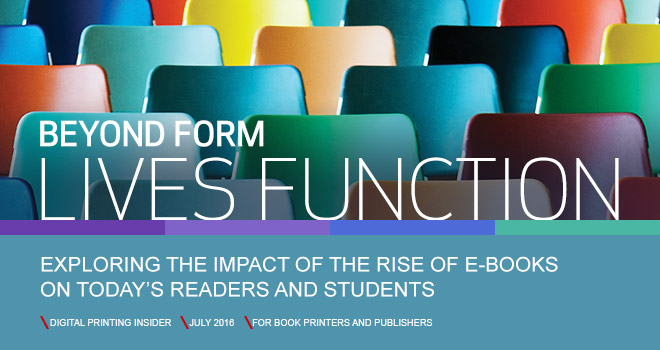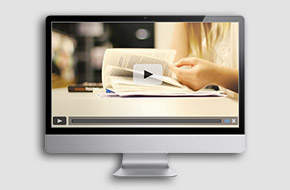Education and the E-Book: What Do Readers Tell Us?
There is no doubt that whether it is words on screen or words on paper, reading advances retention skills. In today’s digital world, though, are changing formats helping or hindering our reading habits? Is the very nature of reading changing as the publishing market evolves?
According to the Emerging Trends: Digital Media Adoption in Book Publishing research conducted by InfoTrends and NAPCO in 2014, print remains a major source of revenue. Digital printing (print on demand) is expected to increase at the expense of traditional offset printing, and more and more titles will become available in e-book versions. All of this aside, what is really interesting is how the evolution from paper to screen is impacting reading today.

In the Canon Solutions America sponsored webinar entitled Education and the E-Book: What Do Readers Tell Us? presented by Printing Impressions and Book Business magazines, InfoTrends’ Barb Pellow discusses the ongoing power struggle between printed books and e-books. Which format is better? “There is a lot of controversy about that very question,” Pellow states in her introduction. “That’s exactly what this webinar is all about.”
Joining Pellow in this exciting exploration of the reading controversy is Naomi Baron, Professor of Linguistics and Executive Director of American University’s Center for Teaching, Research, and Learning. With her new book entitled Words Onscreen: The Fate of Reading in a Digital World, Baron brings fact-based data to the case for printed words on paper. She and her colleagues surveyed over 400 university students in the United States, Japan, Germany, Slovakia, and India. Her survey found a surprising preference for the printed format, particularly when students wanted to concentrate. Throughout this webinar, Baron shares her insightful research findings as well as her comments regarding publishers’, distributors’, and educators’ motivations for print versus screen format. She also poses an engaging argument about who should decide what lies ahead for future readers.
Readers’ Goals: Form Versus Function
“Consider the platform shoe and margarine,” says Baron in her opening remarks. Using these examples, Baron weighs the benefits of form versus function. In the case of the platform shoe, form (fashion) took center stage while function was overlooked. With margarine, the idea itself was functional but the form proved wrongheaded, due to new awareness of the dangers of trans fats. Baron quickly shifts focus to how form and function pertain to the written word, providing examples like art books and newsprint. As we venture into today’s new world of reading and discover the advantages and disadvantages of e-books, Baron challenges publishers and book printers to figure out what their reader-centered goals are and then create practical ways of achieving them.
In the ongoing power struggle between printed books and e-books, which format is better? “There is a lot of controversy about that very question.”
Baron then dives into an overview of the rise of e-books and the trajectory of e-books since the introduction of the Kindle. Next, she moves on to two key issues that are central to the reading controversy — motivation (who wants us to want e-books?) and reader preferences (do readers want e-books, and if so, why?). She asks, “Do we know what readers would tell us about their preferences if we bothered to ask them?”
Join Pellow and Baron in this exciting webinar that uncovers the actual preferences of today’s young adult readers. “We have assumed that in some way the market knows best,” Baron notes. “Our assumptions may or may not be true. Who decides for the next generation on how they get to learn?” This webinar shares insights on print versus on-screen reading, with a particular focus on the education market.

